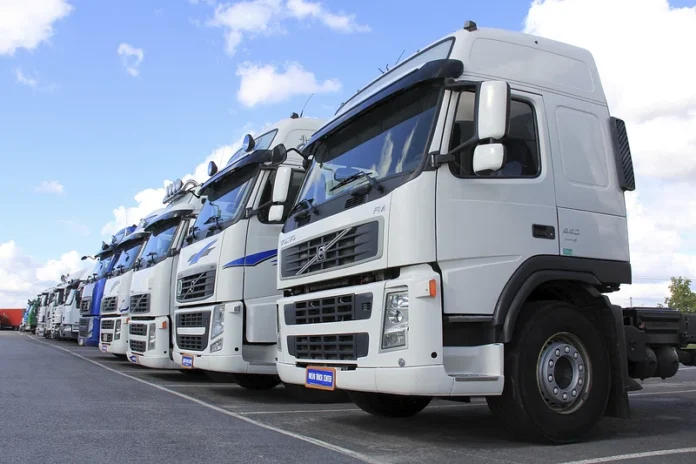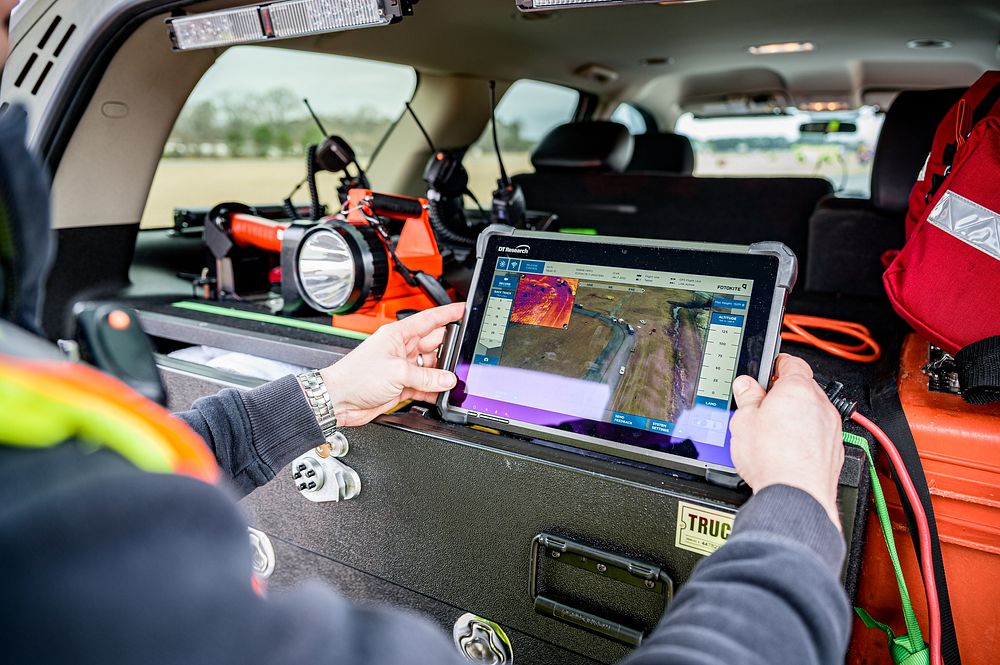
In today’s digitized world, fleet management has undergone a remarkable transformation, driven by technological innovations that have streamlined operations, improved efficiency, and enhanced safety. Technologies such as GPS tracking, real-time monitoring, and data analytics have become integral to managing a modern fleet.
What Is Fleet Cybersecurity?
Fleet cybersecurity refers to the practice of safeguarding a fleet’s digital assets, including onboard vehicle systems, data transmission channels, and central management systems, from cyber threats and vulnerabilities. It encompasses a wide range of strategies, tools, and best practices designed to protect sensitive data, prevent unauthorized access, and ensure the reliable and secure operation of fleet management systems.
Why Is Fleet Cybersecurity Important?
Fleet cybersecurity is not merely a technological concern; it is a critical aspect of ensuring the safety, efficiency, and integrity of fleet operations. Here are several key reasons why fleet cybersecurity is of paramount importance:
Data Protection
Fleet management involves the collection and management of vast amounts of data, including real-time vehicle telemetry, driver information, and customer data. Protecting this sensitive information is essential to maintain customer trust and comply with data protection regulations.
Operational Continuity
Fleet operations are highly dependent on digital systems for tasks such as route optimization, maintenance scheduling, and communication with drivers. A cyberattack that disrupts these systems can lead to significant downtime, delays, and financial losses.
Safety Concerns
Weak cybersecurity can compromise the safety of both vehicles and drivers. For example, a cyberattack that gains control of a vehicle’s systems can potentially result in accidents or malicious actions.
Legal and Regulatory Compliance
The fleet management industry is subject to various regulations and standards, such as the Electronic Logging Device (ELD) mandate and General Data Protection Regulation (GDPR). Compliance with these regulations is not only a legal requirement but also a crucial aspect of maintaining a reputable and responsible fleet operation.

How Weak Cybersecurity Can Impact Operations
The consequences of weak fleet cybersecurity can be far-reaching and damaging to both the business and its stakeholders. Here’s a closer look at how inadequate cybersecurity measures can impact fleet operations:
Data Breaches
A data breach can expose sensitive information, including customer data and proprietary business information. This can lead to financial losses, legal penalties, and damage to the company’s reputation.
Downtime and Delays
Cyberattacks can disrupt fleet management systems, leading to operational downtime and delays in deliveries or services. This can result in customer dissatisfaction and revenue loss.
Safety Risks
Weak cybersecurity can compromise the safety of drivers and vehicles. Unauthorized access to vehicle systems can lead to accidents, vehicle theft, or tampering with vehicle functions.
Financial Consequences
Cyberattacks can incur substantial financial costs, including expenses related to recovery, legal fees, regulatory fines, and potential lawsuits from affected parties.

17 Steps for Maximizing Fleet Cybersecurity Effectiveness
1. Risk Assessment and Vulnerability Scanning
Before you can secure your fleet, you must understand the risks. Conduct a thorough risk assessment to identify potential vulnerabilities in your system. This assessment should include an analysis of your hardware, software, and network infrastructure. Once vulnerabilities are identified, perform regular vulnerability scanning to detect and address potential weaknesses before they can be exploited by cybercriminals.
2. Data Encryption
Protecting sensitive data is paramount. Ensure that all data transmitted between vehicles and your central system is encrypted. Encryption renders intercepted data unreadable without the decryption key, making it significantly harder for cybercriminals to access valuable information. Implement secure communication protocols, such as HTTPS, for data transmission and consider using virtual private networks (VPNs) for an additional layer of security.
3. Access Control and Authentication
Limit access to your fleet management systems to authorized personnel only. Implement strong access controls and user authentication methods, including multi-factor authentication (MFA). This ensures that only individuals with the proper credentials can access critical systems and data. Regularly review and update user access permissions to match employees’ roles and responsibilities, revoking access for those who no longer require it.
4. Firmware and Software Updates
Outdated firmware and software are common entry points for cyberattacks. Keep all vehicle systems, telematics devices, and software up to date with the latest security patches and updates. Establish a routine maintenance schedule to regularly check for and apply updates. Ensure that your vehicles’ onboard computers and IoT devices are running the latest firmware to mitigate potential vulnerabilities.
5. Security Awareness Training
Your fleet’s security is only as strong as its weakest link, which often happens to be human error. Provide cybersecurity training to your employees, including drivers and administrative staff. Teach them about the risks associated with phishing emails, social engineering, and the importance of strong password hygiene. Encourage them to report any suspicious activity promptly.
6. Incident Response Plan
Even with robust security measures, breaches can still occur. Having a well-defined incident response plan is crucial for minimizing damage and downtime. Ensure that your team knows what steps to take if a security incident is detected. This plan should include procedures for containing the breach, notifying stakeholders, investigating the incident, and implementing recovery measures.
7. Remote Vehicle Disablement
In the event of a security breach or a stolen vehicle, having the capability to remotely disable the vehicle can be a lifesaver. This feature can prevent unauthorized access and use of the vehicle, potentially reducing the risk of harm or loss. Ensure that your fleet management system has the functionality to remotely immobilize vehicles when necessary.
8. Regular Security Audits
Periodically assess your fleet’s cybersecurity measures through comprehensive security audits. These audits can uncover vulnerabilities that may have been missed in routine scans and maintenance. Engage third-party cybersecurity experts if needed to provide an unbiased evaluation of your system’s security posture.
9. Secure Data Storage and Backup
In addition to securing data in transit, it’s crucial to protect data at rest. Ensure that your data storage systems are encrypted and have strong access controls. Regularly back up your data and establish redundant storage solutions to prevent data loss in case of a breach or hardware failure.
10. IoT Device Security
Internet of Things (IoT) devices play a vital role in fleet management, providing real-time data on vehicle performance and location. These devices should be treated as potential entry points for cyberattacks. Always change default passwords, keep their firmware updated, and segment IoT devices from critical systems to limit exposure.
11. Supply Chain Security
Cybersecurity isn’t limited to your internal systems. Your supply chain can also introduce risks. Ensure that your suppliers and partners follow OT cybersecurity best practices. This includes verifying that the software and hardware components they provide are secure and regularly updated.
12. Continuous Monitoring
Cyber threats are dynamic and ever-evolving. Implement continuous monitoring systems that can detect abnormal behavior patterns or security breaches in real time. Advanced intrusion detection systems can provide early warning of potential threats, allowing you to respond swiftly.
13. Penetration Testing
Regularly conduct penetration testing to simulate cyberattacks and identify vulnerabilities in your fleet management systems. Engage cybersecurity professionals or firms to carry out these tests. Their findings will help you prioritize and address security weaknesses effectively.
14. Regulatory Compliance
Keep abreast of evolving cybersecurity regulations and standards applicable to the fleet management industry. Compliance with regulations such as the Electronic Logging Device (ELD) mandate and General Data Protection Regulation (GDPR) is critical. Ensure that your fleet operations align with these requirements to avoid legal repercussions.
15. Secure Mobile Applications
Many fleet management activities are now managed through mobile applications. Ensure that these apps are developed with security in mind. Regularly update and patch them to address any discovered vulnerabilities. Educate your users on the importance of using official and secure apps only.
16. Secure Communication Channels
Encrypt all communication channels, including emails and messaging apps, to prevent eavesdropping and man-in-the-middle attacks. Encourage the use of secure messaging platforms within your organization to protect sensitive information.
17. Redundancy and Disaster Recovery
Prepare for worst-case scenarios by establishing redundancy and disaster recovery plans. In the event of a major cybersecurity incident, these plans will ensure business continuity and minimize disruptions to your fleet operations.
Protect Your Fleet from Cyber Vulnerability
Fleet cybersecurity is an ongoing effort that requires vigilance and adaptability. The interconnected nature of modern fleet management systems makes them vulnerable to a wide range of cyber threats. By following these best practices, you can significantly reduce the risk of cyberattacks, protect your vehicles and data, and ensure the smooth and secure operation of your fleet on the road ahead. Remember, cybersecurity is not a one-time task but a continuous commitment to safeguarding your assets and maintaining the trust of your customers and stakeholders.




